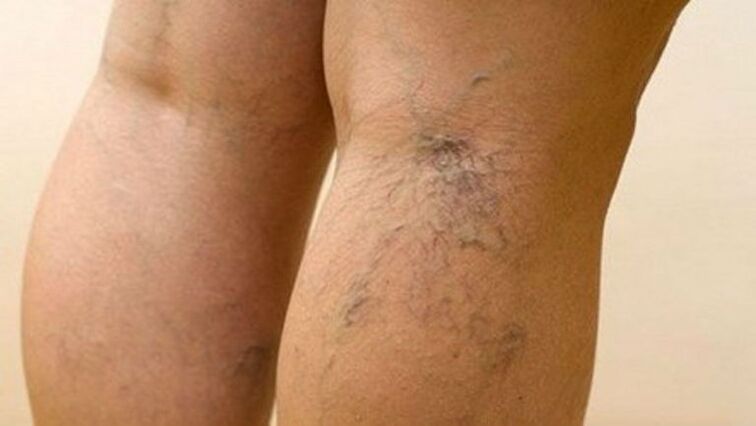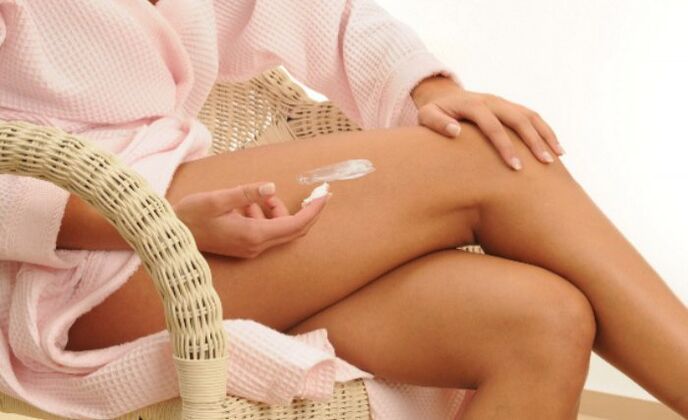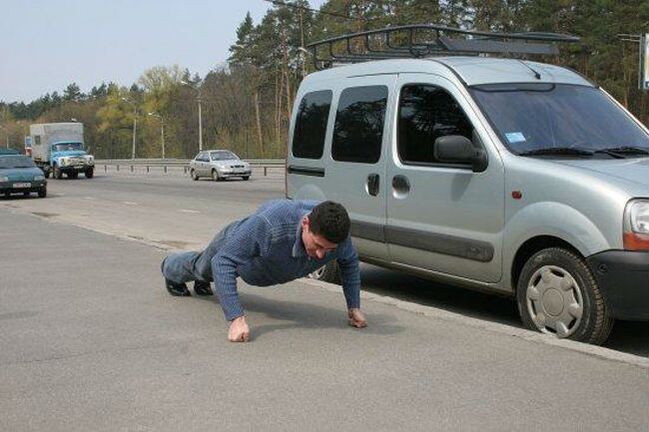
Varicose veins of the lower extremities, according to information on appeal to medical institutions, are found in every fifth man and 28% of women of working age.
If we take into account the entire population, then half of the adults will have characteristic symptoms.
The peculiarity of this disease is the increase from comfortable living conditions. Studies in Asian countries have shown a lower prevalence among the poor engaged in manual labor, taking long walks.
Why are the leg veins loaded?
The anatomical structure of the venous wall is characterized by a reinforced muscle skeleton and a valve apparatus. Convenience lies in the need not only to keep the blood flow in a person's vertical position, but also to organize his rise against gravity towards the heart.
The valves block the return flow to prevent overfilling at the farthest points of the body. This "uncomfortable" place is the feet and legs.
The mechanism of formation of varicose veins of the legs
At the age of 40, the human body begins to synthesize limited plastic materials, the main of which is collagen protein. Essential It is essential for the good tone of the venous valves. Deficiency leads to loss of tone, decline, and inability to delay reverse blood flow and excess mass.
The venous network in the leg consists of superficial vessels extending directly under the skin and deep veins located in the thickness of the muscle layer.
Varicose veins of the lower extremities are characterized by an initial lesion of the superficial venous valves. Congestion appears in areas with thin dilated veins, visible to the eye in the form of a fine network.
Further development of the pathology leads to retention of blood in the periphery and causes tissue edema (fluid leaking through the walls of the veins), malnutrition (the release of toxins is reduced, oxygen and nutrients are retained by the squeezed arteries).
How complications come together
Venous blood stagnation in the legs causes a slowing of blood flow to the vessels, and this creates favorable conditions for platelet aggregation. Blood clots complicate an already compromised blood supply.
The risk of embolism breaking down and moving through large vessels in the heart increases. If a person has defects related to the communication of the right and left chambers, it is possible for an embolus to enter the arterial blood and develop necrotic changes in the organs.
The most common accompanying complication is the addition of a local infection to the affected area of the venous wall, followed by the development of phlebitis or thrombophlebitis.
Causes of the disease
For varicose veins of the lower extremities, there is only one reason independent of a person - a genetic defect in the structure of collagen. It manifests itself not only in varicose veins, but also in relatively early signs of skin aging (dryness, deep wrinkles).
Other reasons relate to the activities and behavior of people.
- Decreased physical activity or, conversely, strenuous physical work leads to a violation of the tone of the leg veins.
- Prolonged forced stay, reduction during working hours causes stagnation of blood in the legs and impaired flow.
- Pregnancy puts extra pressure on the pelvic organs and large veins, preventing drainage from the lower veins.
- Doctors from Asian countries associate the growth of varicose veins in patients with a dependence on the European habit of sitting in a chair or in a chair instead of bent knees.
- High comfortable toilets require increased tension of the abdominal wall muscles during bowel movements, strain contributes to stagnation in the legs. During collection, the act of defecation is more physiological.
- The habit of fast food, a decrease in the percentage of raw vegetables and fruits in the diet lead to constipation and prolonged stress.
- Smokers expose the whole body to the effects of nicotine, it acts on the veins as a paralyzing poison.
- Fashionable shoes with high heels lead to improper stress on the leg muscles and spoil the tone of the veins.
- Common pills, hormonal contraceptives, treatment with hormonal drugs for menopause, osteoporosis lead to impaired collagen synthesis.
- Lingerie advertised for slimming and wearing skinny jeans cause blood to stagnate in the basic parts of the body.
Who should be included in the risk group
Considering the reasons listed for the development of venous pathology, the group of persons with an increased possibility of developing varicose veins of the legs should include:
- professionally related people with a long stay in a standing or sitting position (salesman, teacher, hairdresser, driver, office worker);
- women who prefer skinny jeans, lingerie shaping and high-heeled shoes;
- people involved in weight lifting and bodybuilding;
- people who are used to sitting "side by side";
- women with frequent pregnancies and births, as well as taking hormonal contraceptives;
- smokers, lovers of coffee and strong alcohol;
- constipation.
Preventive measures are needed for these populations.
Symptoms
The first symptoms of varicose veins in the legs are evident at a young age. In the initial stage, they appear with added stress on the legs:
- by the end of the shift, leg and foot pain appear, muscle fatigue;
- when changing shoes, swelling of the feet is found due to the tightness of the shoes;
- in the evening the feet "burn", you want to immerse them in cold water;
- "spiders" form on the skin of the thighs and legs.

In the next stage, a picture of chronic venous insufficiency develops, symptoms of internal varicose veins appear:
- disturbed by night cramps in calves, cramps while walking are possible;
- dark spots, dryness, peeling appear on the skin of the feet and legs;
- the appearance of trophic ulcers, very painful, with loose edges, difficult to treat.
If, against the background of local pain, swelling, redness of the skin, an increase in body temperature, you should think about thrombophlebitis.
diagnostic
In diagnosis, it is customary to distinguish between true (primary) varicose veins, depending on the valve apparatus lesion, and secondary, resulting from trauma and tumors.
Polyclinic surgeons, vascular surgeons, phlebologists are involved in the examination. The doctor looks at the subcutaneous venous nodes, vascular networks, skin pigmentation, initial ulcers, dermatitis.
On palpation, the tension of the superficial veins, the density of the wall, the magnitude of local changes, the presence of a thrombus, the temperature of the skin above the joints (signs of thrombophlebitis) are assessed.
A general blood test will show the onset of inflammation (leukocytosis, accelerated ESR), a tendency for thrombus formation according to a coagulogram.
Vascular ultrasound allows you to track blood flow, venous valve function, and detect blood clots.
Doppler examination allows you to check the structure of the veins, to make a diagnosis in the initial stage of the disease.
The spiral computed tomography method is performed in case of difficulties in diagnosis. This makes it possible to obtain a three-dimensional image of the anatomical region and helps in the choice of surgical treatment.
Treatment of varicose veins of the legs
Better yet to start treating varicose veins of the legs in the initial stage. To do this, you will need to think about the necessary changes in habits, diet and movement.
mode
In order for the feet not to swell until the end of the working day, people of "sitting professions" and "standing" are advised to take physical culture breaks or warm up with foot massage in an elevated position. Drivers, office workers have to walk during the holidays.
The simplest exercises can be done at work:
- barefoot on the floor alternately stand on toes and heels;
- sitting in a chair, lift your legs and make circles with your legs in one direction, then in the other.
Morning exercises should include exercises in a supine position: alternate leg raises, "bicycles", raised leg shakes. Exercises with squats, bent knees are not suitable.
Strength training enthusiasts should reject them. The most prominent are swimming, cycling and walking.
Choosing a balanced diet
Limit all foods that increase weight, promote fluid retention and increase blood viscosity.
Fatty meats and dairy products, spicy and salty foods, canned foods, sweets, baked goods, carbonated drinks are not recommended.
In the daily diet, you should use more vegetables and fruits, berries, onions, garlic, fermented milk products, cereals, vegetable oil is indicated instead of butter, nuts.
Vein support methods
Wearing compression or golf socks is recommended to support blood flow. They are sized to wear while lying on your back.
Silicone-filled violations are advertised as a medicine that creates an electrical charge on the surface of the foot.
Specialists pay attention to the potential impact of these aids only in the initial stage of the disease. In the presence of superficial joints and edema of the foot, their use is completely useless.
Use of medication
Medication treatment consists of taking oral medication from the group of "venotonics" at a therapeutic dose chosen by the doctor. They help relieve fatigue, discomfort in the legs, but do not eliminate the disease.

Surgeons attribute varicose vein medications to the background of conservative treatment, but the main one is one of the least traumatic ways to affect the affected veins. Efficacy has been confirmed in 95% of patients. More serious interventions are used in only 5% of patients.
What about low trauma surgeries
Low traumatic methods of treating varicose veins allow you to avoid surgery, rightly ranking first in terms of effectiveness. They do not require a skin incision, can be performed in a polyclinic and are virtually painless. The patient is not limited in terms of work, movements. A long recovery period is not required after surgery.
Laser ablation method
It is performed under local anesthesia. A light guide is inserted into the varicose vein and a circular laser beam is illuminated during reverse motion.
Action of the method: the beam causes a pronounced burning of the inner lining of the vein, further strengthening. The duration of the intervention is about two hours. The method is applicable in the treatment of veins of any size.
Sclerotherapy technique
A substance is injected into the affected vein which can cause the walls to collapse with subsequent scarring. Foam preparations are especially recommended, which quickly and safely fill the lumen of the diseased vein. The method is applicable when the diameter of the container is up to 1 cm. After entering, it is necessary to walk for an hour. Phlebologists recommend wearing compression stockings for another month.
Microflebectomy method
Under local anesthesia, an incision is made in the skin of a few mm, through which a diseased vein is caught by a hook, brought to the surface of the skin and removed. The method is suitable for venous nodes of any size and diameter. A small scar will remain at the incision site. You should wear compression stockings or socks for 10 days.
Radiofrequency ablation method
It is performed similarly to lasers, but differs in the effect of microwave radio frequencies. This method does not cause tissue burns, so it is less traumatic than laser. After 30 minutes of microwave exposure, the vessel lumen closes. After 7 days, the rehabilitation is considered complete. You can play sports.
In which cases is surgery indicated?
With unsuccessful treatment with conservative methods and the impossibility of using minimally invasive techniques, a phlebectomy operation is prescribed. This allows you to remove large areas of varicose veins, tufts.
The patient was hospitalized. Surgical treatment is performed under general anesthesia. Two incisions are usually made: in the groin area and below the knee. The vein is connected on both sides, pulled out and removed. Sutures are applied to the incisions. The patient is treated in the hospital for a week. Medicines that reduce blood clotting are used. Sutures are removed after at least 7 days.
Phlebectomy is not performed:
- in the patient's old age;
- with massive damage to deep and superficial veins;
- during pregnancy;
- with arteriosclerosis of the vessels of the legs, diabetes mellitus;
- if there is skin disease at the site of the proposed surgery.

Prevention methods
Prevention of varicose veins of the legs is mainly necessary for people with risk factors in the profession.
It is recommended to walk more. There is a massage and strengthening of the vein walls.
During the holidays, sellers and hairdressers are shown foot and leg massage. It is done with slow and smooth movements in the direction from the fingers to the knee and along the thigh. The fist joints are massaged in a circular motion into the central fossa of the foot.
Drivers have to get out of the car, walk around, stretch their legs. Leg exercises are shown.
Fashionistas need to think about the consequences before getting into high heels and wearing tight clothes.
At home, you can take contrast baths or foot showers. Apply a compress on tired legs with decoction of chamomile, chestnut, wormwood, burdock.
A timely visit to the surgeon allows you to get rid of painful problems, restore activity and movement.




































